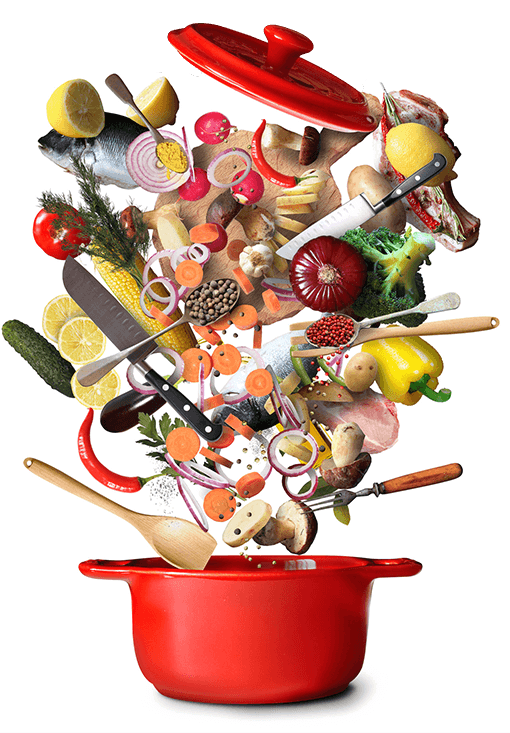Top 20 Kitchen Essentials Every Home Cook Needs

Whether you’re a seasoned chef or just starting your culinary journey, having the right tools in your kitchen can make all the difference. From simplifying meal preparations to enhancing your cooking skills, the right gadgets are essential in any home kitchen. In this comprehensive guide, we’ll explore the top 20 kitchen essentials that are must-haves for any home cook. Get ready to discover how these tools can transform your cooking experience, making every meal easier and more enjoyable. Keep reading to ensure your kitchen is fully equipped to handle all your culinary adventures!
What Do You Need to Know Before Buying New Kitchen Essentials?
When starting the journey to refresh your kitchen with new essentials, it’s crucial to consider both functionality and versatility. Before making any purchases, think about the types of meals you most frequently prepare. Whether you’re whipping up family dinner recipes or experimenting with intricate dessert recipes, your kitchen tools should align with your cooking habits. Quality is paramount; investing in high-quality kitchen essentials means durability and better performance in preparing your favorite dishes. It’s also wise to look for multi-purpose tools that can handle a variety of tasks, saving you space and money in the long run.
Additionally, consider the ease of cleaning and maintenance of the tools you choose. Kitchen items that are dishwasher-safe or easy to clean by hand can drastically reduce your cleanup time, allowing you more freedom to enjoy your culinary creations. Lastly, don’t overlook ergonomic designs which can enhance comfort and prevent strain during cooking. With these considerations in mind, you’ll be better equipped to make informed decisions that enhance your cooking experience, whether you’re crafting savory dinner recipes or sweet dessert masterpieces.
* Please note that some of the links are affilate links, and I earn a commission for purchases made through links in this article.
1. Chef’s Knife

- Why it’s important: A quality chef’s knife is the cornerstone of any kitchen. Its versatility allows for precise slicing, dicing, and chopping of a variety of ingredients.
- Things to know before buying: Look for a knife with a comfortable grip and a blade made of high-quality stainless steel. Consider the knife’s weight and balance for optimal control.
- How to choose a Chef’s Knife: Consider the size of the knife based on your hand size and cutting preferences. Look for a blade that extends through the entire length of the handle for durability and balance.
- Our pick: SHAN ZU Chef Knife 8 Inch or Global 8″ Chef’s Knife
2. Cutting Board
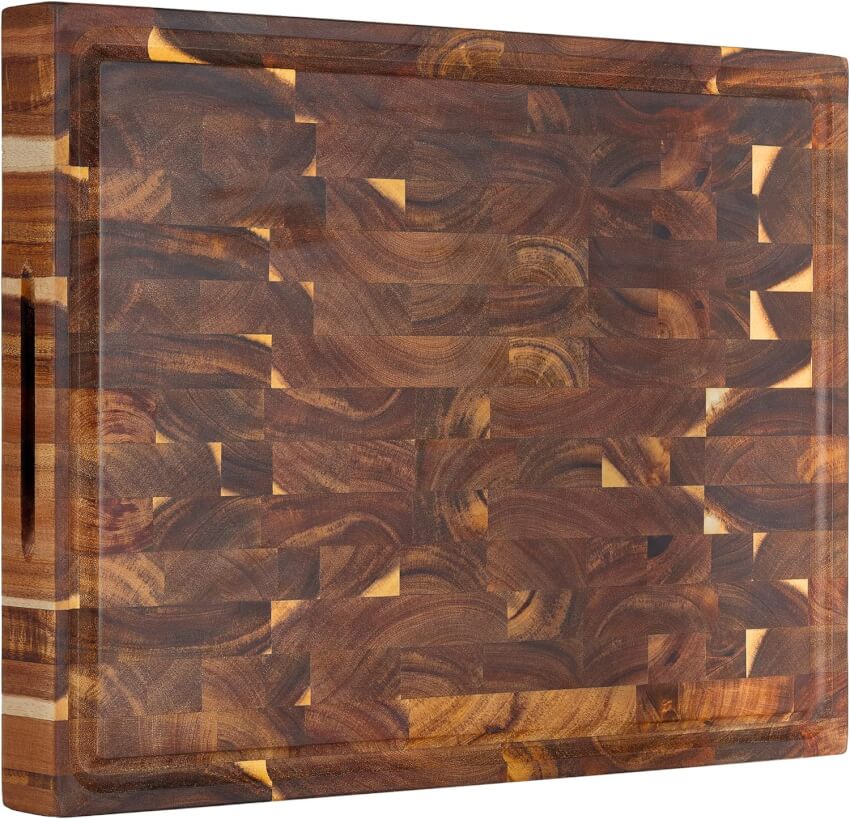
- Why it’s important: A durable cutting board provides a safe and stable surface for chopping ingredients without damaging your countertops or dulling your knives.
- Things to know before buying: Choose a cutting board made of wood or plastic that is large enough to accommodate your slicing needs. Ensure it is easy to clean and maintain.
- How to choose a Cutting Board: Consider the material and construction of the cutting board. Wooden boards are aesthetically pleasing and gentle on knives, while plastic boards are dishwasher safe and easier to sanitize.
- Our pick: AZRHOM Large Thick End Grain Acacia Wood Butcher Block or SMIRLY Wooden Cutting Boards
3. Non-Stick Skillet

- Why it’s important: A non-stick skillet is perfect for cooking eggs, pancakes, and delicate foods without the risk of sticking or burning.
- Things to know before buying: Select a skillet with a durable non-stick coating that can withstand high temperatures. Consider the size and depth of the skillet based on your cooking preferences.
- How to choose a Non-Stick Skillet: Look for a skillet with a sturdy construction and a comfortable handle. Consider the type of non-stick coating, such as PTFE or ceramic, and choose one that suits your cooking style and maintenance preferences.
- Our pick: Cuisinart 12-Inch Skillet
4. Measuring Cups and Spoons
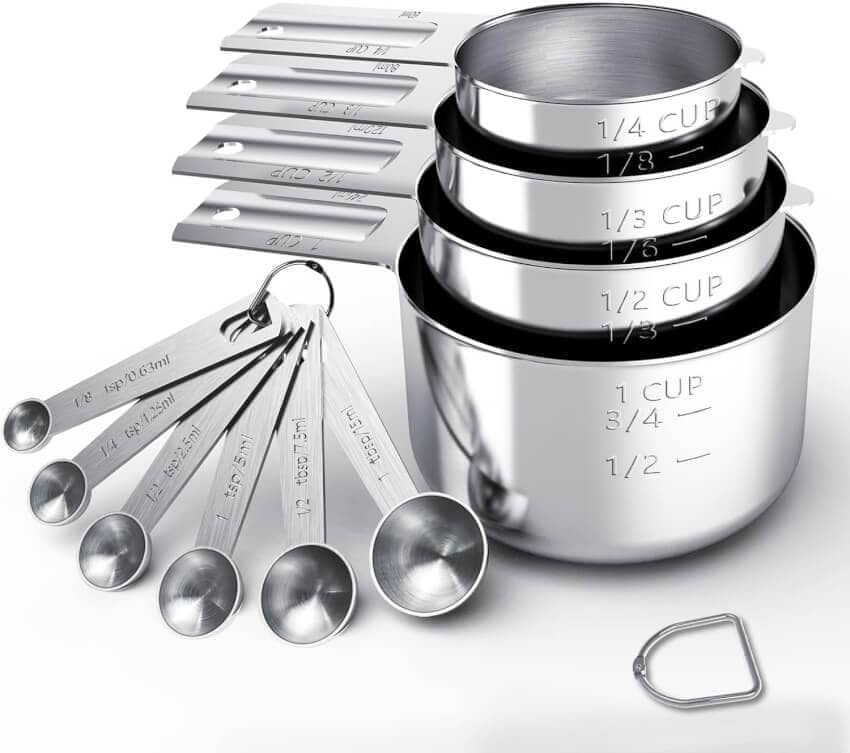
- Why they’re important: Accurate measurements are crucial for achieving consistent results in cooking and baking.
- Things to know before buying: Invest in a set of stainless steel or plastic measuring cups and spoons with clearly marked measurements. Consider whether you prefer individual cups/spoons or a nesting set for compact storage.
- How to choose Measuring Cups and Spoons: Look for measuring cups and spoons with engraved or stamped measurements that won’t fade over time. Choose nesting sets for compact storage and consider dishwasher-safe options for easy cleaning.
- Our pick: TILUCK Stainless Steel Measuring Cups & Spoons Set
5. Wooden Spoon

- Why it’s important: A wooden spoon is ideal for stirring, mixing, and sautéing ingredients without scratching your cookware.
- Things to know before buying: Choose a wooden spoon made of hardwood such as maple or beech for durability. Avoid spoons with rough or unfinished surfaces that may splinter over time.
- How to choose a Wooden Spoon: Look for wooden spoons with smooth, rounded edges and sturdy construction. Consider the length of the handle and the size of the spoon head based on your cooking needs.
- Our pick: 6 Pieces 9 Inch Wood Spoons
6. Vegetable Peeler

- Why it’s important: A vegetable peeler makes quick work of peeling fruits and vegetables, saving you time and effort in the kitchen.
- Things to know before buying a Vegetable Peeler: Choose a peeler with a sharp blade and a comfortable handle. Consider whether you prefer a traditional handheld peeler or a Y-shaped peeler for versatility.
- How to choose a Vegetable Peeler: Test the peeler’s blade sharpness and ensure it feels comfortable and secure in your hand. Look for one with a sturdy construction that can withstand repetitive use.
- Our pick: OXO Good Grips Y-Peeler or if you want a fancy version try SUCCFLY Vegetable Peeler
7. Box Grater

- Why it’s important: box grater is essential for grating cheese, vegetables, and other ingredients with precision and ease.
- Things to know before buying a Box Grater: Look for a box grater with multiple grating surfaces to accommodate different textures. Choose one with a sturdy handle and nonslip base for stability.
- How to choose a Box Grater: Consider the size and shape of the grater holes based on your grating needs. Test the grater’s stability and ease of use, ensuring it feels comfortable to hold and maneuver.
- Our pick: KitchenAid Gourmet 4-Sided Stainless Steel Box Grater
8. Kitchen Scale

- Why it’s important: A kitchen scale provides accurate measurements for ingredients, ensuring precision in cooking and baking.
- Things to know before buying a Kitchen Scale: Look for a digital kitchen scale with an easy-to-read display and a capacity suitable for your cooking needs. Consider whether you prefer a scale with metric or imperial units.
- How to choose a Kitchen Scale: Test the scale’s accuracy with known weights and ensure it can handle the weight capacity you require. Look for additional features such as a tare function and auto-off feature for convenience.
- Our pick: Nicewell Food Scale
9. Tongs
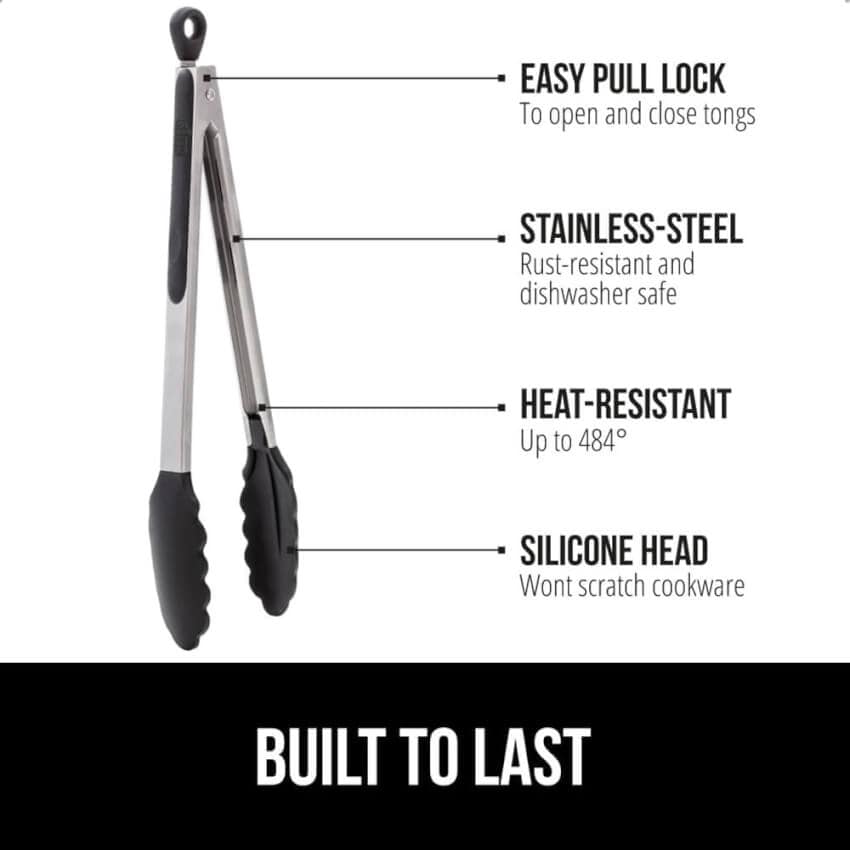
- Why they’re important: Tongs are versatile tools for flipping, turning, and serving foods with precision and control.
- Things to know before buying Tongs: Select tongs with a locking mechanism for easy storage and a nonslip grip for comfortable handling. Look for tongs with silicone tips to protect your cookware.
- How to choose Tongs: Test the tongs’ grip strength and ensure they feel comfortable to hold and operate. Look for tongs with a spring-loaded mechanism for effortless opening and closing.
- Our pick: kitchen tongs
10. Food Storage Containers
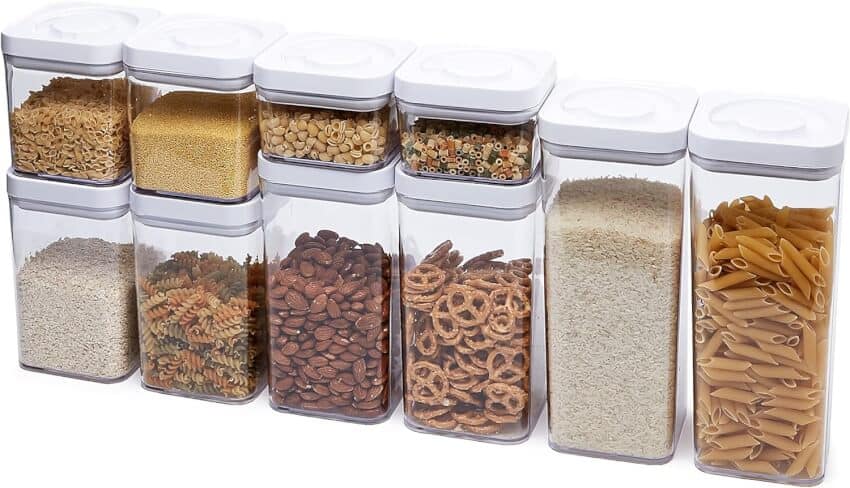
- Why they’re important: Food storage containers are essential for storing leftovers, meal prepping, and organizing pantry staples
- Things to know before buying Food Storage Containers: Choose food storage containers made of durable materials such as glass or BPA-free plastic. Look for containers that are microwave, dishwasher, and freezer safe for convenience.
- How to choose Food Storage Containers: Test the containers’ seal by filling them with water and tipping them upside down. Ensure the lids fit snugly and securely to prevent leaks. Look for stackable containers to save space in your fridge or pantry.
- Our pick: 10-Piece Square Airtight Food Storage Containers or MCIRCO [8-Pack,30 oz] Glass Meal Prep Containers
11. Saucepan

- Why it’s important: A saucepan is versatile for making sauces, soups, and boiling vegetables or pasta.
- Things to know before buying a Saucepan: Choose a saucepan with a heavy bottom for even heat distribution. Consider the size based on your cooking needs and the material, such as stainless steel or nonstick.
- How to choose a Saucepan: Check the handle for comfort and durability. Ensure it has a secure lid that fits snugly to trap heat and moisture. Consider a saucepan with measurement markings for added convenience.
- Our pick: Cuisinart 1.5 Quart Saucepan w/Cover
12. Pasta Pot
- Why it’s important: A pasta pot with a built-in strainer makes cooking pasta easier and less messy.
- Things to know before buying a Pasta Pot: Look for a pot with a sturdy construction, including a tight-fitting lid and durable handles. Consider the size based on the amount of pasta you typically cook.
- How to choose a Pasta Pot: Test the straining mechanism to ensure it effectively separates pasta from water. Look for a pot with a nonstick interior for easy cleaning and consider one with a steamer insert for added versatility.
- Our pick:
13. Casserole Dish
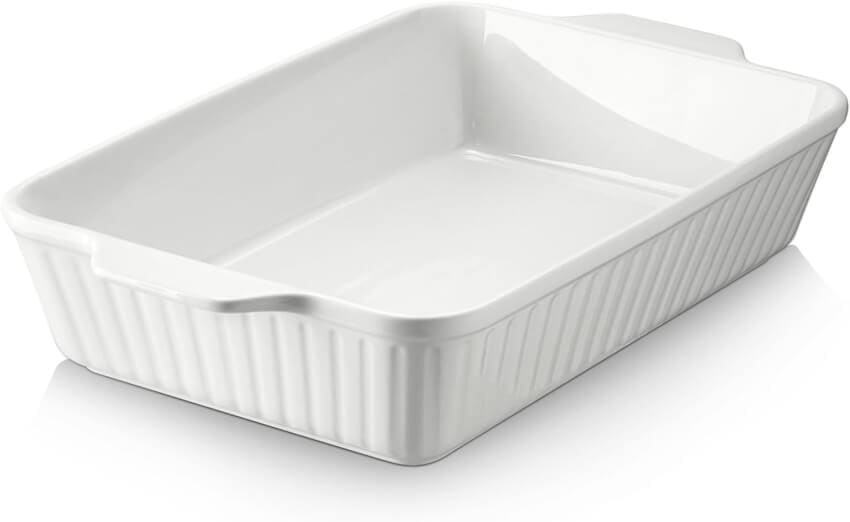
- Why it’s important: A casserole dish is ideal for baking casseroles, gratins, and desserts, and it can also be used for serving.
- Things to know before buying a Casserole Dish: Choose between glass, ceramic, or stoneware dishes based on your preferences and cooking style. Consider the size and shape for fitting in your oven and serving needs.
- How to choose a Casserole Dish: Check the depth and capacity of the dish to ensure it can accommodate your recipes. Look for one with handles for easy lifting and serving. Consider whether you prefer a dish with straight or fluted sides for aesthetic appeal.
- Our pick: 9×13 Ceramic Casserole Dish
14. Thermometer

- Why it’s important: A thermometer ensures food safety and accuracy in cooking meats, candies, and baked goods.
- Things to know before buying a Thermometer: Choose between instant-read or probe thermometers for different cooking needs. Look for one with accurate temperature readings and a durable construction.
- How to choose a Thermometer: Consider the temperature range and response time of the thermometer. Look for one with a digital display that is easy to read. Ensure it has a probe long enough to reach the center of large cuts of meat.
- Our pick: Digital Thermometer
15. Cast Iron Skillet
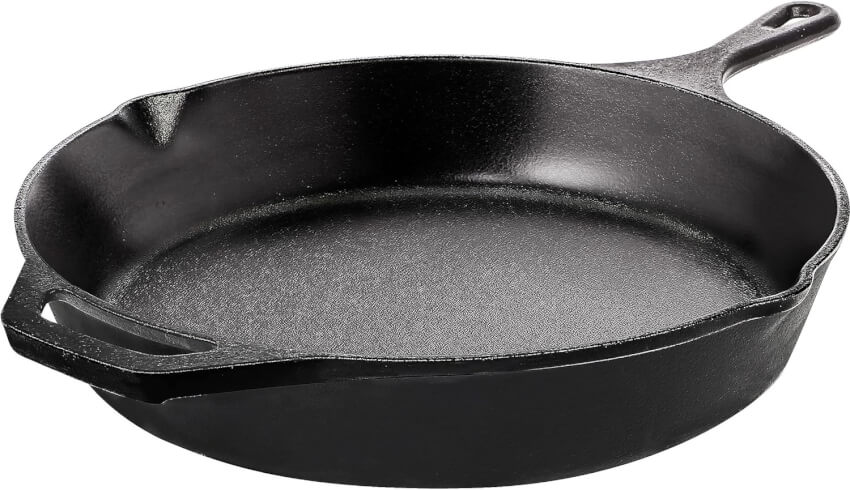
- Why it’s important: A cast iron skillet provides even heat distribution and versatility for cooking everything from meats to desserts.
- Things to know before buying a Cast Iron Skillet: Consider the size and weight of the skillet based on your cooking preferences. Seasoning and proper maintenance are essential for cast iron care.
- How to choose a Cast Iron Skillet: Check for a smooth cooking surface and sturdy handle. Ensure it has a helper handle for easier lifting, especially with larger skillets. Consider pre-seasoned options for convenience.
- Our pick: Cast Iron Skillet
16. Food Processor

- Why it’s important: A food processor makes chopping, slicing, shredding, and pureeing ingredients quick and effortless.
- Things to know before buying a Food Processor: Consider the capacity, motor power, and included attachments based on your cooking needs. Look for one with easy-to-clean parts and sturdy construction.
- How to choose a Food Processor: Check the size and shape of the feed tube to accommodate various ingredients. Look for a processor with sharp blades and multiple speed settings for versatility. Consider one with dishwasher-safe parts for easy maintenance.
- Our pick: Hamilton Food Processor
17. Lemon Juicer

- Why it’s important: A lemon juicer extracts juice efficiently from citrus fruits for cooking, baking, and making beverages.
- Things to know before buying a Lemon Juicer: Choose between handheld or countertop juicers based on your preferences and storage space. Look for one with a sturdy construction and easy-to-clean parts.
- How to choose a Lemon Juicer: Consider the size and capacity of the juicer. Look for one with ridges or teeth to efficiently extract juice. Ensure it has a spout or pouring mechanism for easy transfer of juice.
- Our pick: Zulay Kitchen Metal 2-in-1 Lemon Squeezer
18. Microplane Zester

- Why it’s important: A microplane zester grates citrus zest, hard cheeses, spices, and chocolates for adding flavor to dishes.
- Things to know before buying a Microplane Zester: Look for one with sharp, fine blades for precise zesting. Consider the handle design for comfortable use and easy storage.
- How to choose a Microplane Zester: Test the sharpness of the blades and ensure they are securely attached to the handle. Look for a zester with a nonslip grip to prevent accidents while grating.
- Our pick: Pro microplane
19. Air Fryer

- Why it’s important: An air fryer cooks food with hot air circulation, resulting in crispy and healthier dishes without excess oil.
- Things to know before buying an Air Fryer: Consider the capacity, wattage, and preset functions based on your cooking needs. Look for one with easy-to-clean baskets and adjustable temperature controls.
- How to choose an Air Fryer: Check the basket size to ensure it can accommodate the amount of food you typically cook. Look for one with intuitive controls and a digital display for easy operation. Consider additional features such as preheat function and timer settings for convenience.
- Our pick: Ninja AF101 Air Fryer
20. Stand Mixer

- Why it’s important: A stand mixer is essential for mixing dough, batter, and other ingredients with ease, saving time and effort in the kitchen.
- Things to know before buying a Stand Mixer: Consider the motor power, bowl capacity, and included attachments based on your baking needs. Look for one with a sturdy construction and variable speed settings.
- How to choose a Stand Mixer: Check the capacity of the mixing bowl and ensure it has a secure locking mechanism. Consider the available attachments and whether they meet your specific cooking and baking requirements.
- Our pick: KitchenAid Artisan Series
Additional Read Suggestion:
If you’re keen to delve deeper into kitchen tools, don’t miss my article on “10 Highly Recommended Baking Tools” for more specialized insights!

